What We Faced
Challenge
A large New York-based Health Plan Provider wanted to elevate and enhance the way they connect with their members and providers by enriching the personalized portal experience. The portal, built on Salesforce Experience Cloud, had been launched to members and providers ~6 months prior as a pillar of their digital transformation initiative. The organization sought to continue to enhance the portal experience to better serve its 7,400 active portal users of health plan members, providers, admins, and billing agents.
Implemented Technologies
SALESFORCE Experience Cloud, Mulesoft, Salesforce Shield
What We Did
Solution
The design and implementation of the digital portal were aimed at improving user experience and operational efficiency, while ensuring compliance with stringent audit and regulatory requirements.
User experience requirements included:
- Consumer Feedback: Prompting users to provide immediate feedback on their user experience through a real-time survey on the portal. This allowed the organization to request, receive, and respond to issues quickly while continuously refining the portal based on direct user feedback.
- Provider Attestation Process: An online process for providers and their admins to attest to the accuracy of, or request updates to their information, making the provider directory current and reliable.
- Multilingual Support: Language support for Spanish and Chinese was added to the registration process, improving accessibility for a diverse user base.
- Proactive Patient Support: Providers and their admins now had quicker access to admission, discharge, and transfer notifications, allowing them to offer proactive support to their patient members. This enhancement also helped meet a HEDIS (Healthcare Effectiveness Data and Information Set) measure and audit requirement.
- Single Sign-On (SSO): SSO integration with an electronic noticing system was implemented, allowing a seamless transition for members in compliance with Department of Health regulations.
- Resources and Data Performance: The overall portal experience was enhanced with additional resources, links, and optimized query performance to provide users with faster access to needed information.
In addition to the consumer-facing enhancements above, there were additional operational improvements, including:
- Authorization Workflow Optimization: The addition of the Authorization Team allowed authorization requests to flow directly from the portal to the responsible team without delay, streamlining a critical process.
- Workflow Automation for Regulatory Compliance: A process was developed to automate one of the most manual tasks for the Risk and Quality Team, involving reminders and follow-ups with providers for regulatory compliance in requesting medical records and signature attestations.
- User Behavior Analytics: An analytics tool was integrated to track user behaviors, such as page views and navigation patterns. This data-driven approach enabled the team to identify trends and optimize the user experience further.
What We Delivered
Results
One year after the initial project implementation, the portals have delivered measurable success across several key areas: user satisfaction, operational efficiency, and regulatory compliance.
User Satisfaction & Engagement
The introduction of real-time feedback mechanisms has significantly enhanced the organization’s ability to address user concerns swiftly, resulting in a noticeable increase in user satisfaction scores. The portal’s user behavior analytics have been instrumental in uncovering opportunities for refining the user experience, leading to a separate project that resulted in a 30% improvement in query performance. This optimization has, in turn, boosted user engagement and satisfaction. Additionally, the implementation of multilingual support has expanded the portal’s reach, making it more accessible to a diverse demographic.
Operational Efficiency
The automation of the provider attestation process and compliance workflows has reduced the administrative burden on internal teams, enabling them to focus on higher-value tasks. Automations implemented for the Risk and Quality teams have led to a 75% reduction in manual processes specifically related to follow-up processes, particularly those involving compliance-related tasks. Furthermore, the streamlined authorization process has eliminated over 3,000 manual touchpoints by directing authorization requests directly to the appropriate team, bypassing unnecessary departmental routing.
Regulatory Compliance & Cost Reduction
Maintaining compliance with audit and regulatory requirements has become more manageable, thanks to the automation of essential processes. The project’s enhancements have also led to a marked decrease in call center volume, as users now find the information they need directly through the portal. This reduction in call center dependency has lowered operational costs while improving user experience.
Overall Impact
The information provided and the solution design has solidified the health plans organization’s dedication to providing an optimized, efficient, and user-friendly portal experience. With over 60,000 portal logins recorded, the project has successfully ensured that both members and providers are better equipped to manage their healthcare needs.






